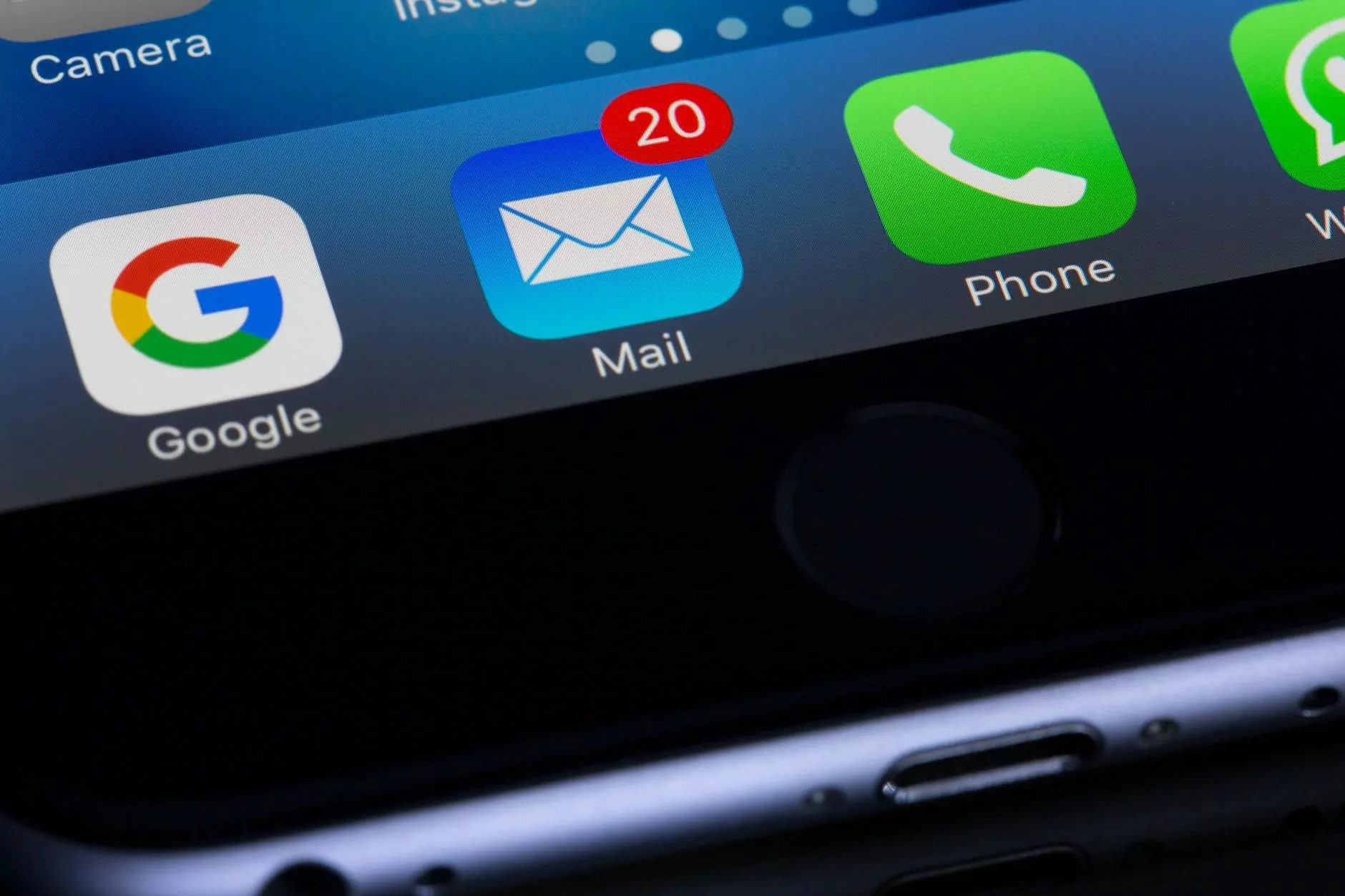Comprehensive Guide to Email Security in Education: Protecting Sensitive Data & Ensuring Safe Communication

In today’s rapidly evolving digital landscape, educational institutions face an unprecedented surge in cyber threats targeting their networks, staff, and students. As educational organizations increasingly rely on digital communication and cloud-based platforms, the importance of email security in education becomes more critical than ever. Protecting sensitive student information, staff personal data, and institutional communications from cybercriminals is not just a technical challenge but a fundamental requirement for maintaining trust, compliance, and operational integrity.
Why Email Security in Education Is More Important Than Ever
Educational institutions are unique in their digital vulnerability profile. They handle vast volumes of personally identifiable information (PII), financial data, and confidential academic records. As cybercriminals develop increasingly sophisticated methods such as phishing, spam, malware, and ransomware, schools and universities must implement robust security measures. Here are some compelling reasons why email security in education should be a top priority:
- Protection of Sensitive Data: Ensuring the confidentiality of student records, staff information, and proprietary academic content.
- Preventing Phishing Attacks: Guarding against deceptive emails that may lead to credential theft or malware infections.
- Maintaining Compliance: Adhering to legal standards like FERPA, GDPR, and other data protection regulations.
- Preserving Institutional Reputation: Avoiding data breaches that can damage trust and credibility among students, parents, and staff.
- Ensuring Continuity of Education: Protecting online learning platforms and administrative systems from disruption caused by cyber-attacks.
Key Challenges in Securing Educational Email Systems
While the stakes are high, the challenges faced by educational institutions in securing their email communications are multifaceted:
- Limited Resources: Many schools operate with constrained IT budgets and staff, making advanced email security implementation difficult.
- Increasingly Sophisticated Threats: Cyber attackers employ tactics like spear-phishing, malware-laden attachments, and impersonation scams tailored for the education sector.
- Gaps in Training and Awareness: Teachers, students, and staff may lack awareness of common cyber threats, leading to risky behaviors.
- Legacy Systems: Outdated email platforms may lack essential security features and are more vulnerable to attacks.
- Remote Learning Complexity: The shift towards remote education increases attack vectors and complicates security protocols.
Best Practices for Enhancing Email Security in Education
Effective email security implementation requires a layered approach. Here are essential strategies and best practices tailored for the education sector:
1. Deploy Advanced Email Filtering and Spam Protection
Implement comprehensive spam filters that can detect and quarantine suspicious emails before they reach user inboxes. Modern solutions leverage AI and machine learning algorithms to identify malicious patterns, phishing attempts, and malware-laden attachments with high accuracy.
2. Enforce Strong Authentication Protocols
Use multi-factor authentication (MFA) for all email accounts, especially for staff and administrative access. MFA adds an extra layer of security beyond simple passwords, significantly reducing the risk of account compromise caused by stolen or weak credentials.
3. Conduct Regular Security Training and Awareness Campaigns
Empower students, teachers, and staff by providing ongoing cybersecurity awareness training. Teach them how to recognize phishing emails, suspicious links, and social engineering tactics. Creating a security-conscious culture is vital for long-term protection.
4. Implement Industry-Leading Email Security Solutions
Partnering with reputable providers like Spambrella ensures access to state-of-the-art email security systems that include real-time threat intelligence, URL filtering, and malware detection—all customized for the needs of educational institutions.
5. Maintain System Updates and Patch Management
Keep all email servers, security software, and endpoints up-to-date with the latest patches. Cybercriminals often exploit known vulnerabilities in outdated systems, so regular updates are a critical defense measure.
6. Use Encryption for Sensitive Communications
Implement encryption protocols such as TLS (Transport Layer Security) to secure email transmission. For particularly sensitive data, consider end-to-end encryption solutions to protect information during email exchange.
7. Regularly Backup Email Data
Maintain frequent backups of email data and system configurations to recover quickly from ransomware or data breach incidents, minimizing downtime and data loss.
The Role of IT Services & Security Systems in Protecting Education Email Infrastructure
Compromising email systems can have far-reaching consequences, including legal liabilities, loss of trust, and operational disruption. That's why integrating comprehensive IT services and security systems is indispensable for educational institutions. Here's how:
Custom-Tailored Security Solutions
Providers like Spambrella offer customized security platforms designed specifically for schools and universities. These solutions combine spam filtering, malware detection, phishing prevention, and user training modules, all managed through a unified dashboard for streamlined security oversight.
24/7 Monitoring and Threat Detection
Continuous monitoring of email traffic helps identify unusual activity patterns indicative of breach attempts. Early detection allows quick response, preventing widespread compromise.
Integration with Other Security Infrastructure
Effective security systems don't operate in isolation. They should integrate with firewalls, endpoint protections, data loss prevention (DLP), and SIEM systems for holistic security management.
Incident Response and Recovery Planning
Advanced security services include incident response plans that enable swift mitigation of threats, minimizing damage and restoring normal operations rapidly.
Legal and Ethical Considerations in Email Security for Education
Protecting email data is not just a technical necessity but also a legal and ethical obligation. Educational institutions must comply with various regulations that govern data privacy and security:
- FERPA (Family Educational Rights and Privacy Act): Ensures the confidentiality of student education records.
- GDPR (General Data Protection Regulation): Governs personal data protection for institutions dealing with European citizens.
- HIPAA (Health Insurance Portability and Accountability Act): Relevant when handling health-related student information.
Adhering to these standards requires implementing security measures like encryption, secure authentication, access controls, and rigorous data handling policies.
Future Trends in Email Security for Education
The landscape of email security in education continues to evolve rapidly. Emerging trends to watch include:
- AI-Driven Threat Intelligence: Automated detection and response to sophisticated threats in real-time.
- Zero Trust Security Models: Verifying every access request, regardless of origin, to minimize internal and external threats.
- Enhanced User Authentication: Biometric verification, behavioral analytics, and passwordless login methods.
- Integration of Blockchain: Securing email authentication and improving data integrity.
Conclusion: Securing the Future of Education Through Robust Email Security
Education institutions must prioritize email security in education to safeguard their digital environment. Employing a layered security approach that combines innovative technology, comprehensive policies, regular training, and professional IT support creates a resilient defense against cyber threats.
Partnering with trusted experts like Spambrella ensures that your institution stays ahead of cybercriminals, maintaining the integrity, confidentiality, and availability of critical communication channels. As the sector advances into a digital-first future, proactive email security measures will remain a cornerstone for a safe, compliant, and thriving educational environment.









